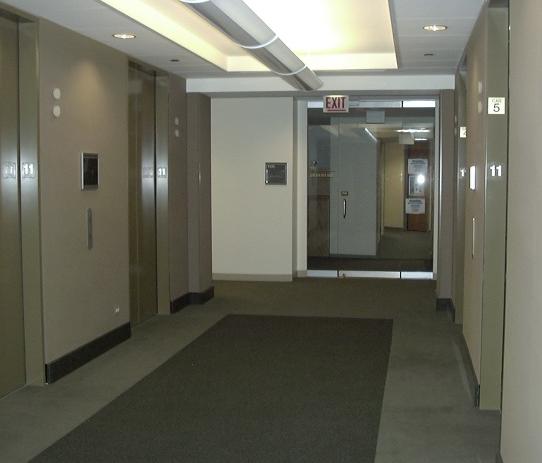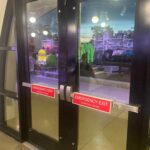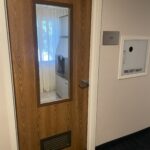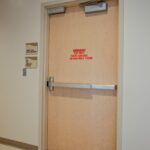 Fair warning…this is going to be one of those posts that makes your eyes glaze over, especially if you haven’t had your coffee yet. But since I’ve seen several people come to my site looking for this information and leaving without it, I need to post about it before the next person comes looking. I’ll try to make it as concise as possible, and remember, the red italicized paragraphs are the code excerpts so you probably don’t need to read those unless you’re really digging into this issue.
Fair warning…this is going to be one of those posts that makes your eyes glaze over, especially if you haven’t had your coffee yet. But since I’ve seen several people come to my site looking for this information and leaving without it, I need to post about it before the next person comes looking. I’ll try to make it as concise as possible, and remember, the red italicized paragraphs are the code excerpts so you probably don’t need to read those unless you’re really digging into this issue.
So imagine that you’re working late on a Friday night and you leave your office to go to the vending machine for a snack. Just as the lobby door closes, you realize that you forgot your access card. When you push the elevator button to go down to the security desk, the elevator doesn’t respond. Your cell phone and keys are back at your desk and your less-dedicated coworkers have all gone home. What now?
The International Building Code (IBC) requires elevator lobbies to have at least one means of egress complying with Chapter 10. If there isn’t a stair that is directly accessed from the elevator lobby, the only way to comply with the IBC and provide security to the tenant space is by providing delayed egress hardware which would allow egress into and through the tenant space from the elevator lobby after a 15-second delay.
The Massachusetts State Building Code – 780 CMR contains an exception that is specific to Massachusetts, which allows the tenant entrance door to have a fail safe lock that unlocks on fire alarm, allowing egress through the tenant space to an exit. The 15-second delay and audible alarm are not required. With this application, the door is more secure than it would be with a delayed egress device because the door unlocks upon fire alarm and power failure, but does not allow someone to actuate a timer and access the tenant space after 15 seconds. There are a few additional requirements that must be met in order to use this exception:
- The building must be Use Group B (Business).
- One tenant must occupy the entire floor.
- The building must have a security station staffed 24 hours per day.
- The building must be equipped throughout with both a supervised automatic fire sprinkler system and a supervised automatic fire alarm system.
- The fire alarm / sprinkler system must automatically unlock the door upon activation.
- The door must unlock upon loss of power and must have the capability of being unlocked by a signal from the fire command center.
- The elevator lobby must be equipped with a telephone connected to the staffed security station, with instructional signage.
The 2009 Edition of NFPA 101 contains a new section which is similar to the 780 CMR requirements. This section also allows the use of a fail safe lock without delayed egress functionality, with a few slightly different requirements:
- The section is not limited to business occupancies but must be allowed by the applicable occupancy chapter.
- The electronic switch to release the lock must be listed in accordance with UL294.
- There are more specific requirements regarding the alarm system and power supply (see below).
- After unlocking, the door must remain unlocked until the fire alarm system has been manually reset.
- If the hardware remains latched after unlocking, the latch-releasing hardware must be door-mounted.
- The two-way communication system must be connected to a central control point which is constantly staffed with people who are capable, trained, and authorized to provide emergency assistance.
The bottom line is that the most restrictive security measure allowed by the IBC on elevator lobby doors where egress through the tenant space is required would be delayed egress hardware, but the Massachusetts State Building Code and the 2009 edition of NFPA 101 allow fail safe locks without the delayed egress function. It’s always recommended to confirm requirements you’re unsure of with the code official. [Note: I changed this paragraph in response to the comment left by Tom Jacobs. My intent was not to say that delayed egress was required by the IBC, but that delayed egress hardware is the most restrictive type of security measure that would meet the IBC requirements for a code-compliant means of egress. Delayed egress is not allowed in all occupancy types, so check the applicable edition of the code.]
The applicable code excerpts are included below for reference.
IBC 2009:
708.14.1 Elevator lobby. An enclosed elevator lobby shall be provided at each floor where an elevator shaft enclosure connects more than three stories. The lobby enclosure shall separate the elevator shaft enclosure doors from each floor by fire partitions. In addition to the requirements in Section 709 for fire partitions, doors protecting openings in the elevator lobby enclosure walls shall also comply with Section 715.4.3 as required for corridor walls and penetrations of the elevator lobby enclosure by ducts and air transfer openings shall be protected as required for corridors in accordance with Section 716.5.4.1. Elevator lobbies shall have at least one means of egress complying with Chapter 10 and other provisions within this code.
Massachusetts State Building Code – 780 CMR, 8th Edition (6th and 7th Editions similar):
1008.1.9.7 Add a second exception to item 4, as follows:
Exception 2 . I n Use Group B buildings where one tenant occupies the entire floor and the building has a security station staffed 24 hours each day , the installation of a door release device may be omitted on egress doors in elevator lobbies provided that all other items in this section are met, and in addition, the following items are met:
a. The building is equipped throughout with both a supervised automatic fire sprinkler system and a supervised automatic fire alarm system.
b. The supervised automatic fire sprinkler system and the supervised fire alarm system shall interface with the access control system to unlock the doors automatically upon activation of either system.
c. The elevator lobby shall be equipped with a telephone connected directly to the staffed security station and a sign having block letters one inch in height shall be provided directly above the telephone and shall state: “In case of emergency, pick up telephone. You will be connected directly to security personnel.”
NFPA 101 – 2009 Edition (new requirement):
7.2.1.6.3 Elevator Lobby Exit Access Door Assemblies Locking.
Where permitted in Chapters 11 through 43, door assemblies separating the elevator lobby from the exit access required by 7.4.1.6.1 shall be permitted to be electronically locked, provided that all the following criteria are met:
(1) The electronic switch for releasing the lock is listed in accordance with UL294, Standard forAccess Control System Units
(2) The building is protected throughout by a fire alarm system in accordance with Section 9.6.
(3) The building is protected throughout by an approved, supervised automatic sprinkler system in accordance with Section 9.7.
(4) Waterflow in the sprinkler system required by 7.2.1.6.3(3) is arranged to initiate the building fire alarm system.
(5) The elevator lobby is protected by an approved, supervised smoke detection system in accordance with Section 9.6.
(6) Detection of smoke by the detection system required by 7.2.1.6.3(5) is arranged to initiate the building fire alarm system.
(7) Initiation of the building fire alarm system by other than manual fire alarm boxes unlocks the elevator lobby door assembly.
(8) Loss of power to the elevator lobby electronic lock system unlocks the elevator lobby door assemblies.
(9) The elevator lobby electronic lock system is not supplied with emergency or standby electrical power.
(10) Once unlocked, the elevator lobby door assemblies remain unlocked until the building fire alarm system has been manually reset.
(11) Where the elevator lobby door assemblies remain latched after being unlocked, latch-releasing hardware in accordance with 7.2.1.5.9 is affixed to the door leaves.
(12) A two-way communication system is provided for communication between the elevator lobby and a central control point that is constantly staffed.
(13) The central control point staff required by 7.2.1.6.3(12) is capable, trained, and authorized to provide emergency assistance.
(14) The provisions of 7.2.1.6.1 for delayed-egress locking systems are not applied to the elevator lobby door assemblies.
(15)*The provisions of 7.2.1.6.2 for access-controlled egress door assemblies are not applied to the elevator lobby door assemblies.
You need to login or register to bookmark/favorite this content.






There is a lot more to this than meets the eye. 708.14.1 is the same in the 2006 IBC. Using 2006 IBC, your scenario has the following issues:
1. Elevators are not recognized as a component of a required means of egress unless it is an elevator used as an accessible means of egress (disabled access). If so then the elevator needs to comply with the emergency operation and signaling device requirements of the elevator code, standby power needs to be provided in case of loss of power, and the elevator has to be accessed from either an area of refuge or a horizontal exit. It is doubtful this is the case here or many other places.
2. The code requires a minimum of 2 exits from each floor, only 1 of which would be permitted to be the elevator, so there should never be an elevator lobby much less a floor without access to at least 2 separate exits.
3. If there is an exit stair in the tenant space, it would only receive credit for serving the tenant space.
4. There is no enclosed elevator lobby shown in the picture, because the elevator lobby separates the elevator car doors from the rest of the floor and there is no such separation shown. The separation might not be there because of an exception for a fully-sprinklered building.
5. QUOTE: “The bottom line is that the IBC requires delayed egress hardware on elevator lobby doors…” Respectfully, there is no such requirement. Delayed egress hardware is “permitted” but never “required”. Also, delayed egress hardware does not have to be accepted by the jurisdiction, and the permission can be revoked for cause.
Remember, the building code mainly applies to new construction, additions, remodeling, etc. The fire code would typically handle egress issues after the building is occupied. Also, just because a new code edition is out does not mean it applies. The code legally adopted by the jurisdiction applies, so as directed it is best to check with the jurisdiction.